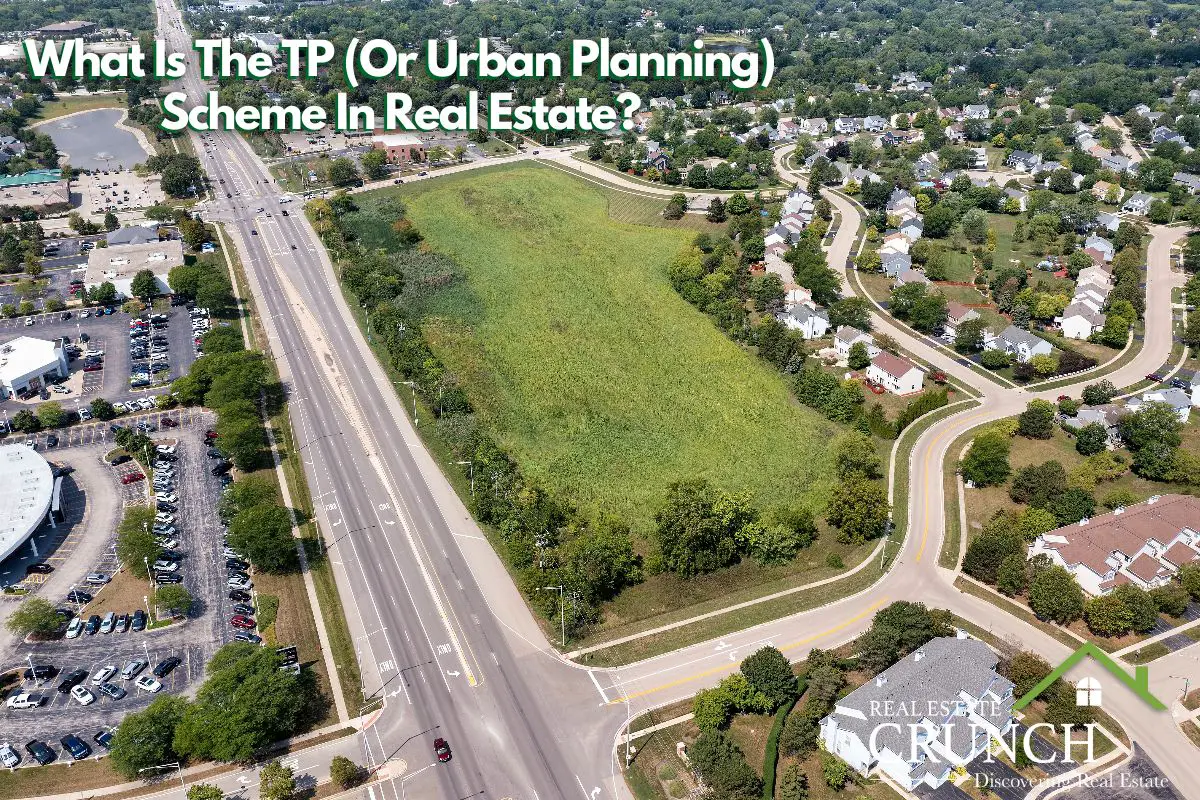Every country has a similar strategy: the “town planning scheme” or the “urban planning scheme.” It signifies the government’s initiative to assess and dictate land utilization for public benefit.
While interpretations may vary across borders, the town planning scheme or the urban planning scheme commonly involves the government acquiring land to enhance urban infrastructure, such as broadening roads, creating parks, establishing open spaces, or other ventures they consider essential for urban development and lifestyle improvement. Read on as we delve into the intricacies of the town and urban planning schemes and their implications.
Table of Contents
- Understanding The TP Scheme And Its Role In Urban Planning
- Urban Planning In The USA
- The Evolution Of Urban Planning In The US
- Related Question
Understanding The TP Scheme And Its Role In Urban Planning
The TP (Town Planning) Scheme is an essential tool in urban development, a mechanism designed to bring structure, order, and strategic growth to rapidly expanding urban regions.
Its primary goal is reorganizing land parcels of different ownerships, delineating specific zones for various purposes – from open spaces and road networks to housing for the economically weaker sections.

Where Is The TP Scheme Implemented?
The TP scheme predominantly focuses on greenfield projects or areas with partial development. Such spaces often emerge as new towns, poised on the brink of extensive development.
By consolidating land for specific purposes, like roads and public parks, the TP scheme plays a pivotal role in city planning and rejuvenating downtown regions.
The TP Scheme Procedure
With the TP Scheme or any Urban Planning Scheme, certain things must take place. This can also be for most kinds of urban planning.
Draft Scheme
The foundation of the TP scheme involves defining its intent, carrying out area surveys, and determining boundaries. The drafting committee’s role is pivotal here, conducting meetings for public participation, consultations, and addressing objections.
Following these deliberations, the draft proceeds to the state government, awaiting their nod.
Preliminary Scheme
In a more hands-on phase, the preliminary scheme entails chalked-out physical and spatial plans. This is when the intricate layout of roads, plots, and infrastructure takes shape.
Parallelly, personal hearings with affected landowners ensure everyone’s voice is heard. The Town Planning Officer (TPO) makes the final decisions in this phase, submitting the outcomes to the state government.
Final Scheme
This phase delves into the financial aspects – from infrastructure cost to compensation. It culminates with the TPO’s final financial planning decision, after which the complete scheme seeks the state government’s approval.
Urban Planning In The USA
In the United States, the TP scheme is often synonymous with Urban Planning, a crucial part of the country’s land use laws. These laws hold considerable weight, directly influencing economic activities, community livability, and national security.
Land use laws shape our everyday lives in countless ways. They determine the plots for agriculture, commercial enterprises, and industrial operations. Moreover, they play a role in defining land values, making provisions for ecological conservation, paving the way for energy resources, and even earmarking territories for military operations.
Given these vast implications, urban planning is a focal point of academic research, professional practice, and societal discourse. Unsurprisingly, many pursue specialized careers as “Land Use Planners” or “Urban Planners,” renowned educational institutions offer dedicated programs in these fields.
However, navigating urban planning can be daunting, primarily due to the interchangeable use of terminologies. While ‘Urban Planning’ zeroes in on land use laws in cities and municipal areas,
‘Land Use Planning’ expands the horizon to include planning for more extensive geographic regions, encompassing state and federal lands. ‘Comprehensive Planning,’ on the other hand, is more holistic, enveloping urban planning and focusing on long-term community development.

Why Urban Planning?
Urban planning stems from dual motivations: enhancing quality of life and preventing the consequences of unsystematic growth. A well-planned city can offer its residents easy access to essential services like healthcare, education, recreational spaces, and more. However, the absence of adequate planning can lead to several challenges:
Land Use Conflicts
Proper demarcation can prevent residential areas from bearing the brunt of noise and pollution from industrial zones.
Traffic Woes
A robust road network can alleviate traffic issues, ensuring smooth commutes and reduced pollution.
Urban Sprawl
Urban planners today strive to curtail the rapid spread of cities, promoting vertical expansion rather than horizontal sprawl.
The TP scheme, or Urban Planning as it’s known in the USA, is the linchpin of systematic city growth. As urban regions burgeon, meticulous planning becomes paramount, ensuring that cities are growth hubs and sustainable living spaces.
The Evolution Of Urban Planning In The US
Zoning has traditionally been the cornerstone of urban planning in the US. Still, as the nation has progressed from its agricultural beginnings, through the Industrial Revolution, and into the contemporary era, various modifications to urban planning have emerged in response to shifting social and economic landscapes.
Some noteworthy developments include:

Systems Planning
While earlier planning approaches concentrated on tangible aspects like the positioning of municipal zones, systems planning evolved in response to the swift urbanization post-World War II.
This multi-faceted approach incorporates elements from diverse fields, such as public health, safety, and environmental considerations, ensuring cities are designed and maintained holistically.
Democratic Planning
Aiming for a more inclusive urban planning process, democratic planning emphasizes broader public engagement. It actively seeks input from various community sections, especially those that might typically be overlooked.
Sometimes referred to as advocacy or equity planning, its objective is to ensure a more equitable distribution of urban resources and decision-making opportunities.
Environmental Planning
While conventional urban planning evaluates environmental conditions when deciding construction locales and types, environmental planning goes further. It assesses the impact of urban growth on the environment and promotes development strategies that ensure sustainability for the long haul.
Smart Growth Planning
Emerging as the latest urban planning paradigm, intelligent growth planning amalgamates earlier concepts, fine-tuned to address current challenges. It focuses on foreseeing and managing urban expansion while actively combatting the effects of “urban sprawl” that arise as cities spread to cater to growing populations.
Fundamental principles include accommodating larger population densities without compromising the environment or quality of life. Strategies like setting urban growth boundaries, promoting alternative and public transport systems, and prioritizing the redevelopment of existing city areas before expanding into new territories are hallmarks of this approach.
As cities evolve, so will the strategies that guide their growth. These iterations in planning reflect a nation’s dedication to creating urban environments that are responsive to the needs of their residents, both current and future.
Real Estate Crunch gives you real property and real estate information and advice. We offer a free monthly newsletter; you can sign up for our newsletter by clicking here.
We also have a weekly podcast called “Real Estate Crunch,” found on all major podcast platforms. Listen to our podcast by clicking here.
Follow us on our social media platforms – Facebook and Instagram.
Related Question
Why Do Banks Sell Foreclosures So Cheaply?
When looking for a home, many people look for foreclosures. The question of why banks sell foreclosure homes so cheaply is a common question that arises when people come across foreclosure listings offering properties at significantly lower prices than the market value.
By clicking here, you can read more about Why Do Banks Sell Foreclosures So Cheaply?
What Is Reconciliation In Real Estate And How Is It Used?
A critical step in the appraisal process is reconciliation, where the appraiser combines the estimates of the value obtained from different approaches to arrive at a final market value. In addition to appraisal, reconciliation is an accounting procedure to ensure the accuracy and balance of trust accounts. Read on to delve into the concept of reconciliation in real estate, explaining its steps and providing examples of its application.
By clicking here, you can read more about What Is Reconciliation In Real Estate And How Is It Used?
Zenni Home – Automatization In The Housing Market
In the United States, the conventional approach involves building homes one by one or as individual projects, lacking the efficiency of mass production. However, Zenni Home is on a mission to change this paradigm by introducing high levels of automation in their factory, treating homes as products rather than one-off projects. This shift promises a multitude of advantages and benefits for the housing industry as a whole.
By clicking here, you can read more about Zenni Home – Automatization In The Housing Market.


